ゲージ チャート
ゲージ チャートは単一値を表示します。または、それらを範囲しきい値と比較した値のリストを表示します。ゲージはまた、他の範囲の条件付き書式設定を可能にします。Reveal では、��次のゲージ チャートを使用できます: リニア、円形、テキスト、KPI、ブレット グラフ。
リニア ゲージ
リニア ゲージは、ラベル、[ラベル] のプレースホルダーの設定から取得された値、および設定 [値] のプレースホルダーの値が表示されます。値は、四角形としてチャート化され、バンド内または隣りに数値形式で表示されます。このゲージ タイプは、行の値を並べて比較することに適しています。
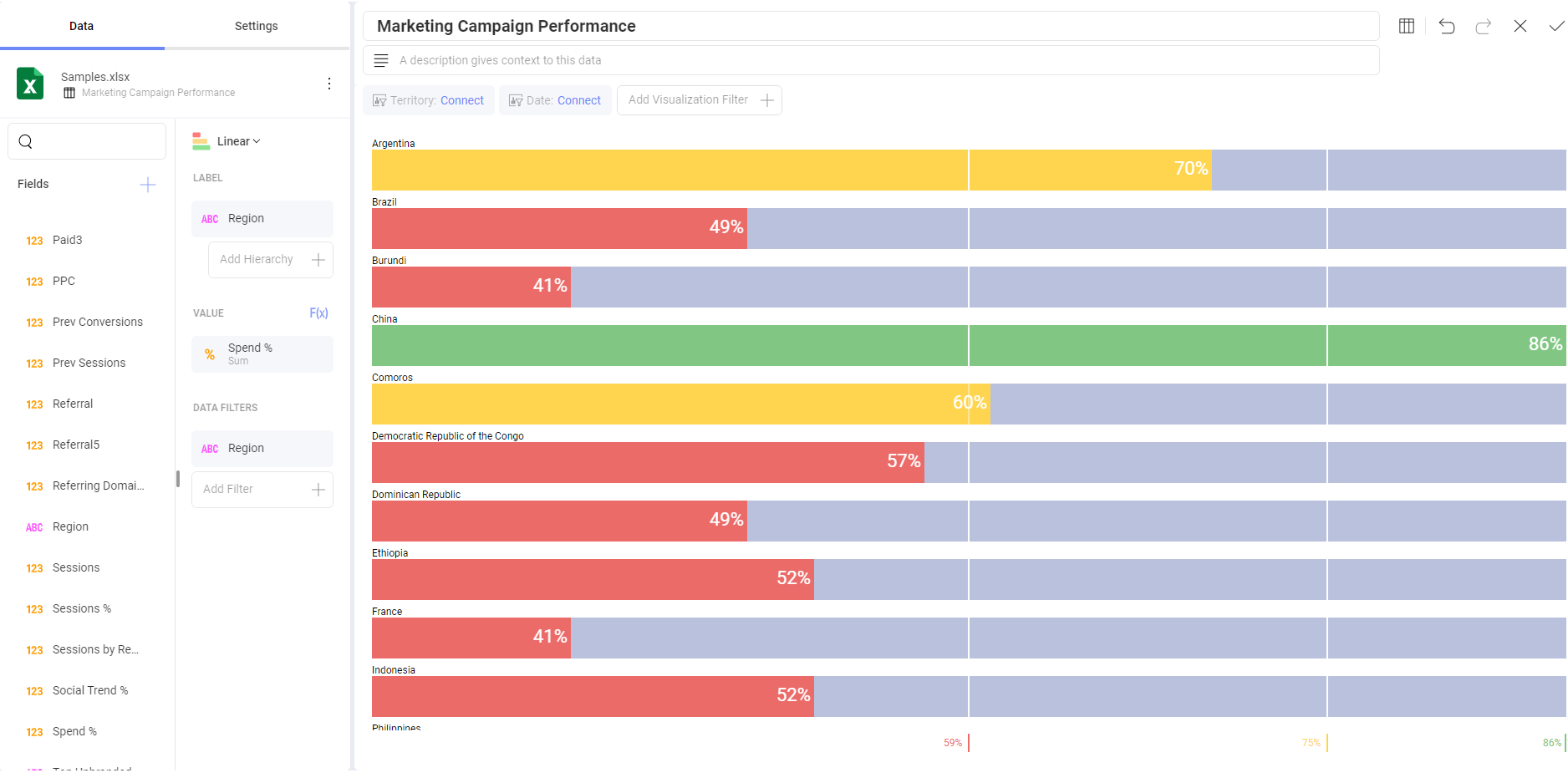
円形ゲージ
円形ゲージは、バンドの最大および最小のしきい値、および現在の値を表示します。現在の範囲の色で背景も塗りつぶします。
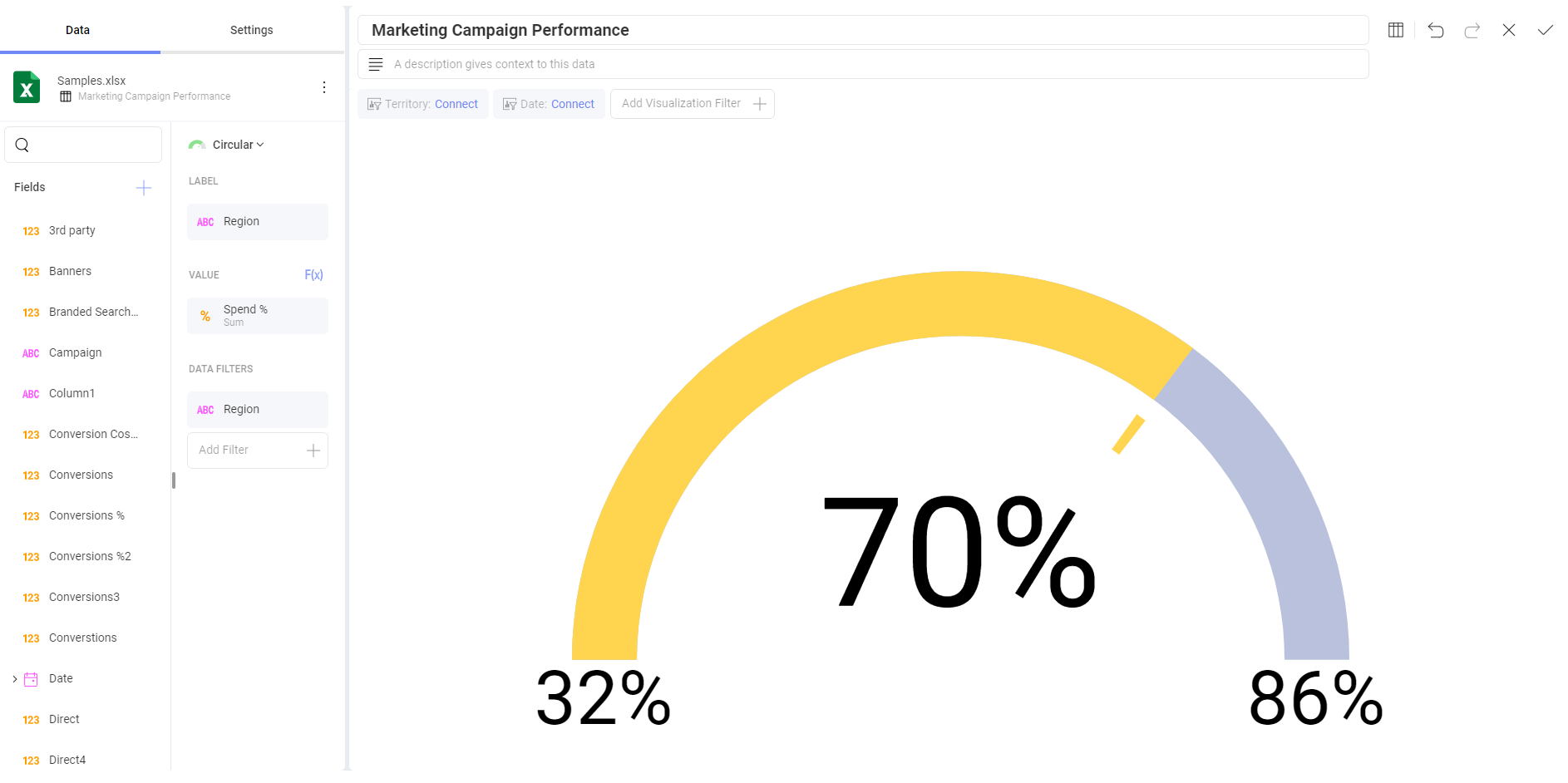
テキスト ゲージ
テキスト ゲージは、大きなフォントで Value 列データを表示します。このタイプは、非常に優先度の高いメトリックに適しています。デフォルトでは、いずれかのフィルターが適用されていない限り、選択データ行が異なるようにゲージは最初のデータ行の値列のデータを表示します。
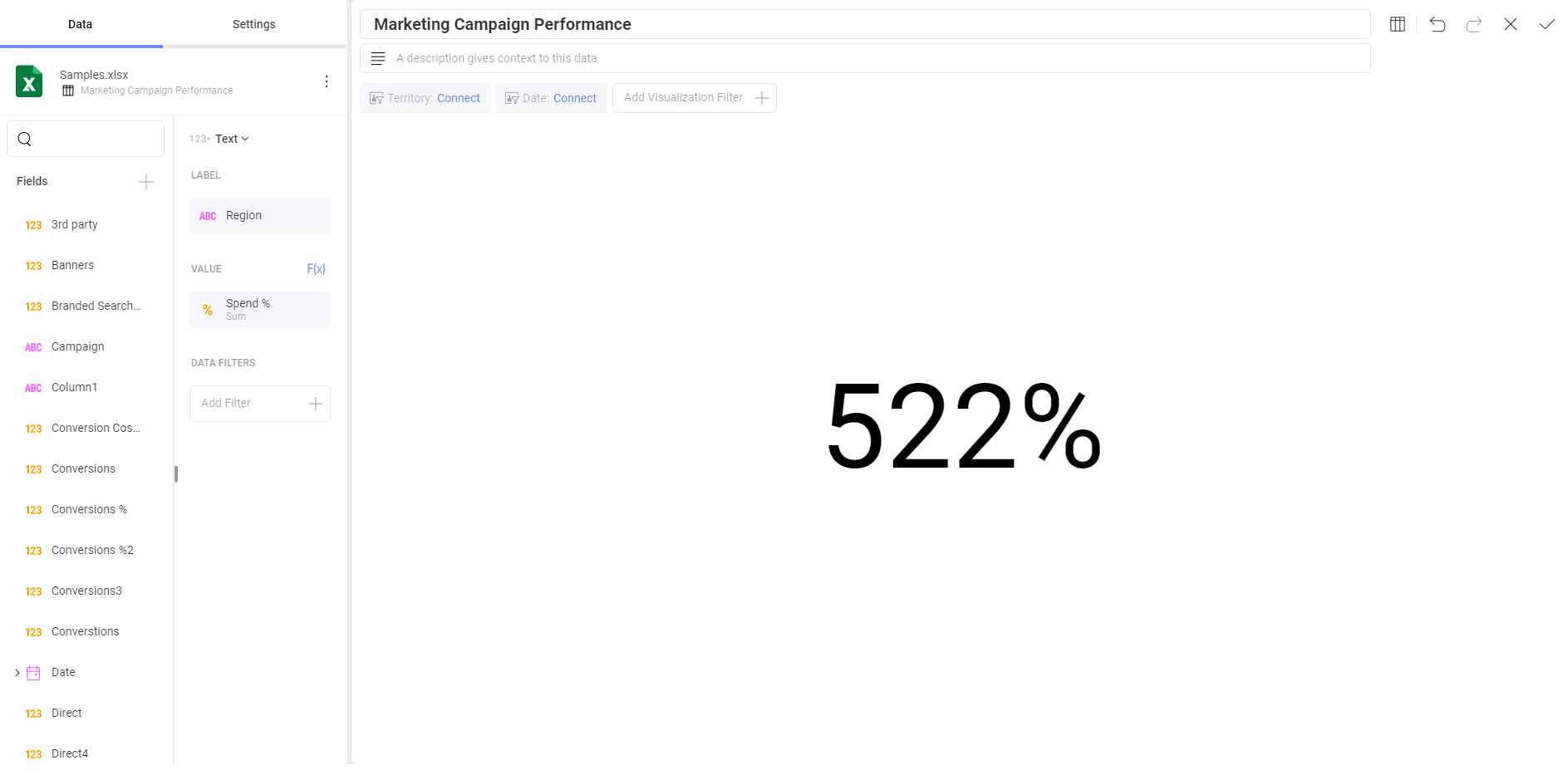
ブレット グラフ
ブレット グラフ ゲージは、リニア ゲージに似ていて、[ラベル] のプレースホルダーからラベルを表示し、[値] のプレースホルダーから値を表示します。値は水平線でチャート化され、数字形式で右側にも表示されます。
ブレット グラフは新しいビジュアル インジケーターをリニア ゲージに追加します。[ターゲット] プレースホルダーの目標値をベースにした垂直マークです。これは新しいインジケーターで数値列から取得されます。このチャートを構成するには 2 つの数値列とテキスト列が必要です。
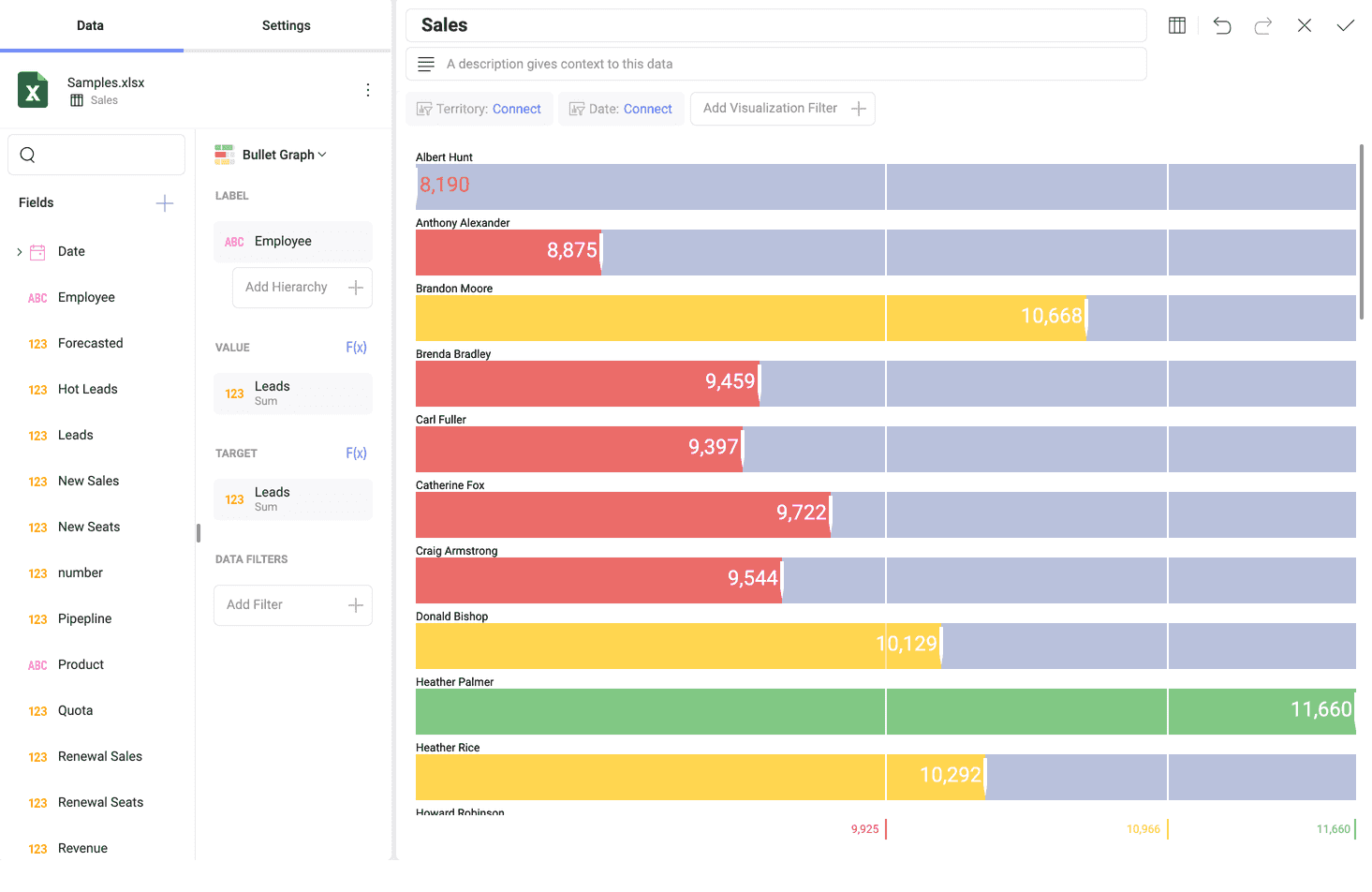
このブレット は、値を左右に並べて比較する際に便利です。また、目標値 (垂直マーク) に対する値 (水平線) からパフォーマンスを評価できます。
バンドの構成
すべてのゲージ タイプには共通のバンド範囲構成があり、これは表示形式エディターの [設定] セクションにあります。構成ダイアログでは、制限を設定できます: これらの値は自動的に指定された値の列のデータセット内の最大値/最小値として設定されますが、定数値を使用して手動でオーバーライドすることができます。
バンド構成を設定する際、範囲を 3 つのスペースに分割するために 2 つのしきい値を設定する必要があります。しきい値は、パーセンテージとして定義または定数値として定義することができます。また、ここに各バンドに関連付ける色を定義する必要があります。デフォルトでは上部のバンドは緑、中央は黄、下部は赤です。
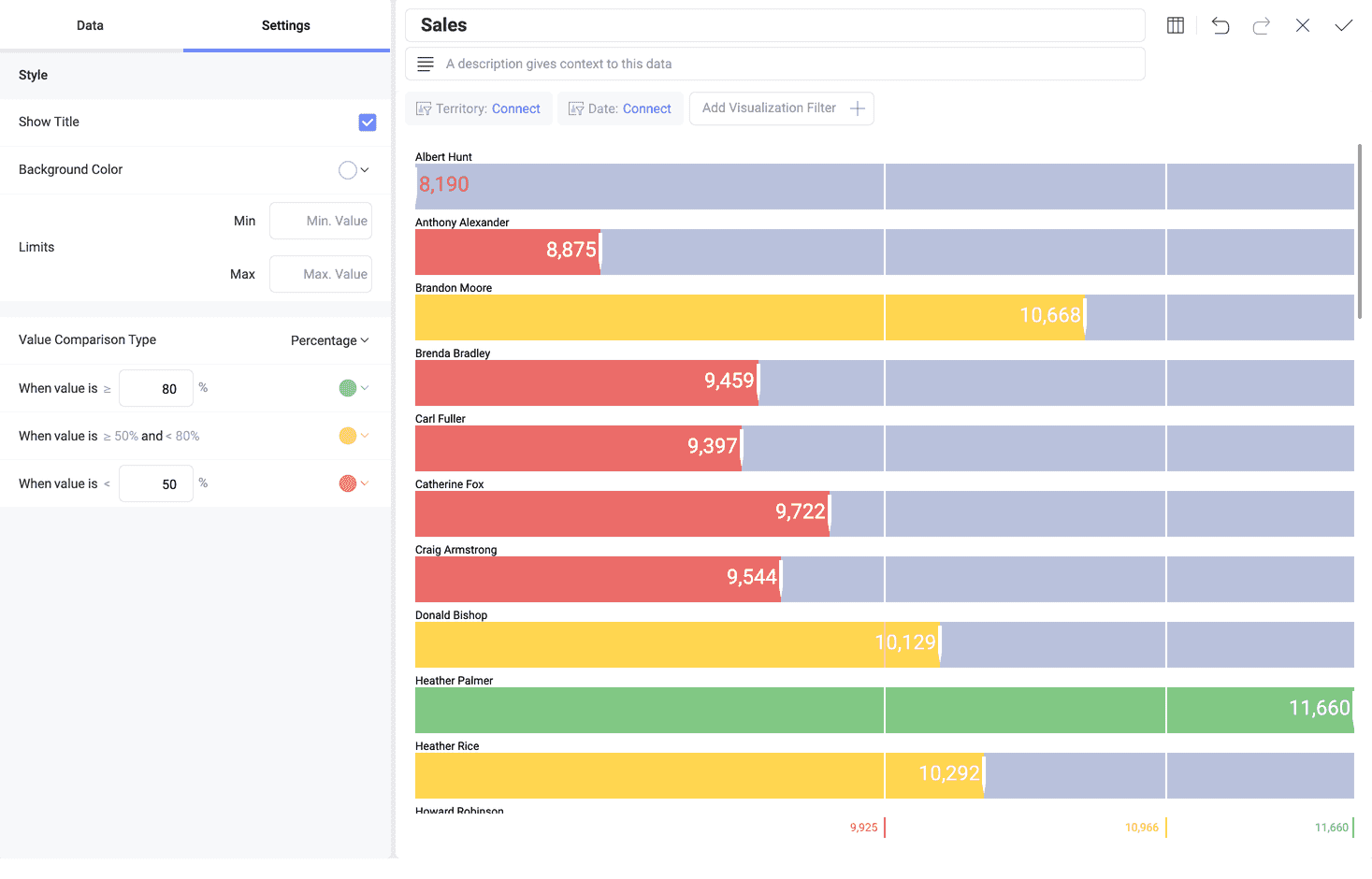
バンド構成は、Reveal を通じて適用された書式ではなく、元のデータに基づいています。上の円型ゲージでは、表示形式が数値を表示するように書式設定されていても、元のデータはパーセンテージで表されています。したがって、選択された [値比較タイプ] は [パーセンテージ] であり、範囲は数値ではなくパーセンテージとして定義されます。